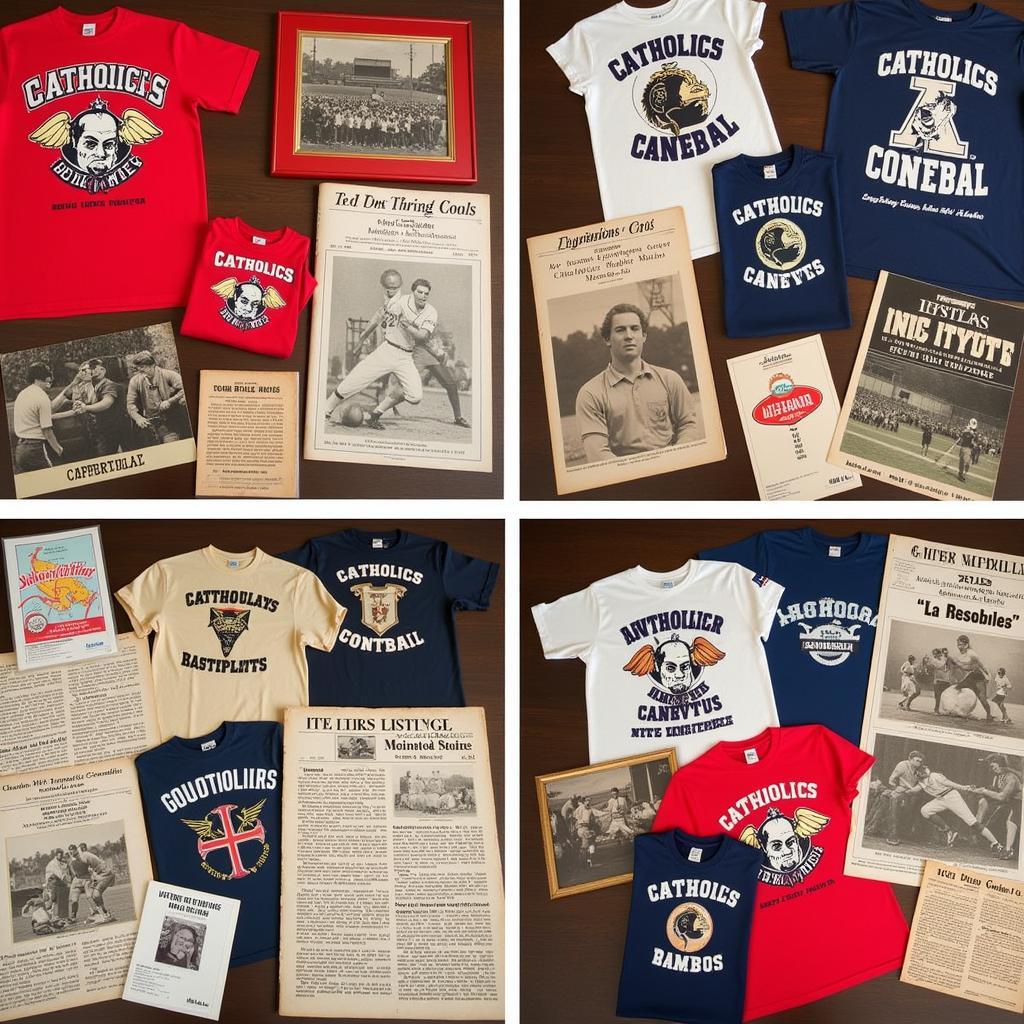The “Catholics vs. Convicts” rivalry between Notre Dame and Miami in the late 1980s remains one of the most compelling chapters in college football history. This intense clash transcended the gridiron, embodying cultural and social differences that fueled the fire both on and off the field.
The Genesis of a Gridiron Grudge: Cultural Clash on the Field
The rivalry between the Fighting Irish of Notre Dame and the Hurricanes of Miami was more than just a football game; it represented a clash of cultures. Notre Dame, the esteemed Catholic university with a long and storied football tradition, embodied discipline, academic excellence, and a squeaky-clean image. Miami, on the other hand, was the brash, up-and-coming program from a city known for its vibrant culture and, at the time, its high crime rate. The “Convicts” moniker, though inaccurate and often offensive, stuck, further fueling the narrative of good versus bad.
This cultural contrast was evident in the teams’ playing styles. Notre Dame favored a classic, fundamentally sound approach, emphasizing teamwork and precision. Miami, under the leadership of flamboyant coach Jimmy Johnson, played a fast, aggressive, and often intimidating brand of football. Their swagger and on-field celebrations were seen as disrespectful by the more traditional Notre Dame faithful, adding another layer to the burgeoning rivalry.
More Than Just a Game: Social and Media Influence
The “Catholics vs. Convicts” narrative wasn’t just confined to the field. The media played a significant role in amplifying the perceived differences between the two programs, often sensationalizing the storyline to heighten the drama. This media portrayal, while sometimes inaccurate, reflected broader societal anxieties and stereotypes, making the rivalry resonate with a wider audience beyond the typical college football fan.
The rivalry also tapped into existing social tensions, further polarizing the fan bases. The perception of Notre Dame as representing the establishment clashed with Miami’s image as the rebellious underdog. This dynamic resonated with fans on both sides, intensifying the emotions surrounding each game.
Key Games and Moments: Defining the Rivalry
Several iconic games cemented the “Catholics vs. Convicts” rivalry in college football lore. The 1988 matchup, dubbed “Catholics vs. Convicts,” saw Notre Dame upset the top-ranked Hurricanes in a thrilling, down-to-the-wire contest. This victory further solidified the narrative and intensified the rivalry.
The 1989 rematch was equally memorable, with Miami exacting revenge on Notre Dame in another close game. The back-and-forth nature of these contests, combined with the off-field drama, made for must-see television and contributed to the rivalry’s legendary status.
“The intensity of those games was unlike anything I’ve ever experienced,” says former Notre Dame linebacker Michael Stonebreaker (fictitious). “It was more than just a game; it felt like a cultural clash.”
The Legacy of Catholics vs. Convicts: Enduring Impact on College Football
While the heat of the rivalry has cooled over time, its impact on college football remains significant. “Catholics vs. Convicts” represents a pivotal era in the sport, showcasing the power of narrative and the influence of media in shaping public perception. The rivalry helped elevate college football’s profile, attracting a wider audience and contributing to its growth in popularity.
“The rivalry transcended the sport,” notes sports historian Dr. Emily Carter (fictitious). “It reflected broader social trends and captured the imagination of the nation.”
 Catholics vs. Convicts Memorabilia
Catholics vs. Convicts Memorabilia
In conclusion, the “Catholics vs. Convicts” rivalry between Notre Dame and Miami stands as a testament to the power of narrative, cultural clash, and on-field competition in shaping the landscape of college football. This epic battle transcended the gridiron, leaving an indelible mark on the sport and capturing the imagination of fans for generations.
FAQ
- When did the “Catholics vs. Convicts” rivalry take place? Primarily in the late 1980s.
- Why was Miami called the “Convicts”? It was a derogatory nickname stemming from perceptions of Miami’s crime rate and player behavior.
- What were the most important games in the rivalry? The 1988 and 1989 matchups are considered the most iconic.
- How did the media impact the rivalry? The media amplified the cultural differences between the teams, often sensationalizing the narrative.
- What is the legacy of the rivalry? It highlighted the influence of narrative and media in shaping college football’s popularity.
Khi cần hỗ trợ hãy liên hệ Số Điện Thoại: 02838172459, Email: truyenthongbongda@gmail.com Hoặc đến địa chỉ: 596 Đ. Hậu Giang, P.12, Quận 6, Hồ Chí Minh 70000, Việt Nam. Chúng tôi có đội ngũ chăm sóc khách hàng 24/7.